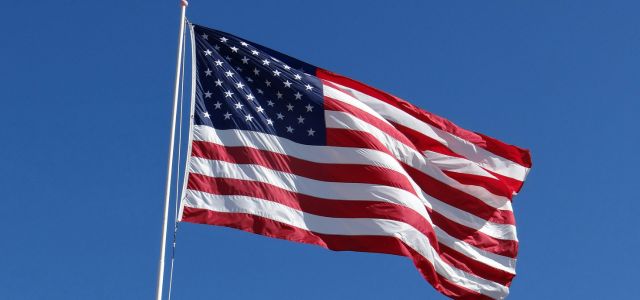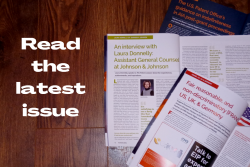Chevron U.S.A. Inc. v. Natural Resources Defense Council, 467 US 837 (1984) instructed courts to defer to an agency’s reasonable interpretation of an ambiguous statute. In 2024, the Supreme Court’s decision in Loper Bright Enterprises v. Raimondo, 144 S. Ct. 2244, declared that era over. The Court emphasized that judges, not agencies, must interpret statutes, and that while agency expertise may be persuasive, it is never controlling. Yet the Federal Circuit’s 2025 decision in Lynk Labs Inc. v. Samsung Electronics Co. suggests that Chevron’s influence may not be so easily buried.
This article includes facts and procedural posture from Lynk Labs and identifies the precise legal issue: whether an abandoned, unpublished application can constitute “printed publication” prior art in IPR, and whether the Federal Circuit’s reliance on USPTO policy effectively reintroduces deference under a different label.
A brief history of Chevron
The Chevron doctrine originated in the context of environmental regulation, but its reach extended to virtually every regulated industry. The two-step framework was simple: if Congress had spoken clearly, courts applied the statute as written; if not, courts deferred to the agency’s reasonable interpretation. This approach was justified on the grounds that agencies possessed technical expertise and accountability, while courts lacked both. Critics argued that it allowed agencies to expand their jurisdiction, undermined the separation of powers, and created instability as interpretations shifted with each political administration. Defenders countered that it promoted uniformity and efficiency in complex regulatory regimes.
The Lynk Labs case: facts and issues
In Lynk Labs, Samsung challenged the patent before the Patent Trial and Appeal Board (PTAB), arguing that it was invalid in light of an earlier, abandoned, unpublished patent application. Traditionally, prior art must be publicly accessible to count against a patent, and the America Invents Act (AIA) codifies this principle by limiting inter partes review (IPR) challenges to “patents or printed publications” under 35 U.S.C. § 311(b).
However, the PTAB relied on an abandoned, unpublished application as part of an invalidity combination, and the Federal Circuit’s decision in early 2025 endorsed treating the filing date of the abandoned, unpublished application as prior art relevant to the IPR, notwithstanding the AIA’s “patents or printed publications” limitation.
The legal issue presented is whether an abandoned, unpublished application can qualify as prior art, and whether the Federal Circuit’s reasoning, which adopted USPTO policy almost verbatim, contravenes Loper Bright by effectively deferring to agency interpretation of the Patent Act.
Analysis
The amicus briefs filed in support of certiorari underscore the stakes. Professor Timothy Hsieh of Oklahoma City University School of Law argued that the Federal Circuit “parroted” the USPTO’s reasoning, adopting it nearly verbatim without independent statutory analysis. He described this as Chevron “in all but name,” warning that the Court had allowed agency policy to dictate statutory meaning. VLSI Technology, a semiconductor company, argued that allowing abandoned, unpublished applications to serve as prior art contradicts a century of precedent requiring public accessibility, citing In re Hall, 781 F.2d 897 (Fed. Cir. 1986).
Per statute, IPRs may be based only on “patents or printed publications.” An abandoned, unpublished application is neither. By expanding this category, the Federal Circuit arguably rewrote the statute under the guise of interpretation. This raises due process concerns. Inventors cannot reasonably anticipate that abandoned, unpublished filings will later be used against them, and the law should provide clear notice of the standards by which citizens are judged. The Court’s approach signals a post-Chevron dynamic in which agency policies may continue to shape outcomes even when courts disclaim formal deference.
Takeaways
If abandoned, unpublished applications can be treated as prior art, thereby expanding the universe of potential invalidating references. This creates new risks in IPR proceedings and undermines the predictability of patent rights. Portfolio audits will need to account for the possibility that unpublished filings could surface years later, and filing strategies may need to emphasize earlier priority dates and broader disclosures to preempt such challenges.
The possibility that abandoned, unpublished filings could be weaponized adds a new layer of risk to validity. This will likely factor into valuations on decisions, acquisitions, and enforcement strategies. Other jurisdictions, such as the European Union and China, continue to emphasize public accessibility as a prerequisite for prior art. If the US diverges by allowing non-publicly accessible filings to count, it could complicate international strategy and create inconsistencies across markets.

Written by David Habib, J.D.
Founding Partner, Habib and Mason Law, PLLC
You may also like…
Pravin Anand conferred with the APAA Enduring Impact Award
Pre-eminent IP Lawyer and Managing Partner of Anand and Anand, Mr Pravin Anand, has been conferred with the...
The quiet power of confidentiality clubs in SEP litigation
In standard essential patent (SEP) disputes, especially those involving FRAND (Fair, Reasonable, and...
A $10 million patent win reduced to a $1 lesson in damages
In a decision that will resonate as a stark warning to patent litigants, the US Court of Appeals for the Federal...
Contact us to write for out Newsletter














